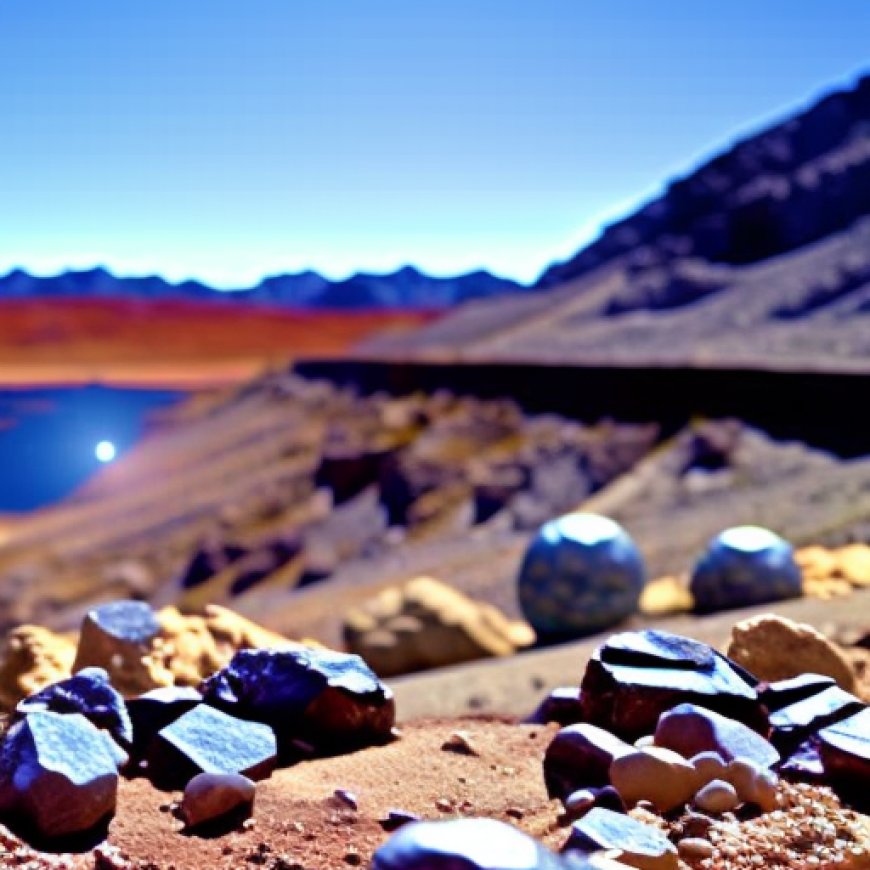Solar Beats Coal In Fossil-Friendly Texas, Despite Fossil Friends
Solar Beats Coal In Fossil-Friendly Texas, Despite Fossil Friends CleanTechnica


The Renewable Energy Juggernaut Rolls On in Texas
The renewable energy juggernaut keeps rolling on in Texas, even though public officials in the state have bent over backwards to protect fossil energy interests. In the latest twist, Texas has set itself up as potential market for new concentrating solar power technology that can pump out electricity or industrial process heat on a 24/7 basis, no matter what the sun is doing.
Texas Is Still A Coal State…
Any time renewable resources beat fossil fuels it’s big news, especially in Texas where oil and gas hold a firm grip on the economy. The state’s coal industry is no slouch, either. In a state-of-the-coal recap last year, Texas State Comptroller Glenn Hegar noted that Texas ranked a lofty #2 in lignite coal production in the US as of 2022, second only to North Dakota. For all types of coal, Texas held down the respectable #7 slot.
The US Energy Information Agency also notes that Texas is the biggest consumer of coal in the US, a good deal of which comes from in-state coal mines. “On a tonnage basis, Texas lignite accounts for almost one-third of the state’s coal consumption,” EIA explains.
EIA further observes that almost none of Texas’s lignite is exported to other states. It all goes for electricity generation at in-state power plants.
As reported by Hegar, as of 2023 Texas had 15 coal power plants. With a combined capacity of almost 20,000 megawatts, they accounted for almost 11% of the electricity grid managed by the Electric Reliability Council of Texas, which covers 90% of the state.
… But Solar Is Coming On Strong…
How things have changed in just one year. The organization Institute for Energy Economics and Financial Analysis (IEEFA) took a look at the most recent numbers, for March 2024. They reported two pieces of news that bode ill for the future of coal power in Texas.
“First, solar generation topped coal’s output for the first time in any month, sending 3.26 million megawatt-hours (MWh) onto the grid vs. the 2.96 million MWh supplied by coal,” IEEFA stated.
“Second, coal’s market share fell below 10% for the first time ever, to just over 9%. The decline continued a long-term slide that began a decade ago,” they continued,” while noting that solar’s market share rose above 10% in the same month.
The March figures are all the more impressive considering that solar was barely a blip on the ERCOT screen as recently as years go. In 2017 it registered just 0.6% of all electricity demand.
… And Here Comes Next-Generation Concentrating Solar Power
The solar industry can’t take all the credit for pushing coal aside. Natural gas began vying with coal for dominance of the ERCOT grid years before the solar industry entered the scene.
In another interesting twist, last November Texas voters approved Proposition 7, a ballot measure that creates a new state fund aimed at supporting the construction of additional thermal power plants. Most of the money is reportedly earmarked for new natural gas power plants.
Proposition 7 throws yet another element into the muddle of the ERCOT grid, which is already groaning under the weight of seasonal demand variations, weather-related emergencies, and a rapidly increasing population, all against a backdrop of continued support for fossil energy by public officials.
To add more fuel to the fire, funds under Proposition 7 cannot be applied to battery storage. That’s bad news for renewable energy developers, who are depending on energy storage to smooth out bumps in the availability of wind as well as solar.
One solution suggested by the Baker Institute — a public policy organization hosted by Rice University — is to reconfigure the ERCOT to optimize coordination between wind farms and photovoltaic arrays, helping to fill the gaps in wind and solar resources.
The Role Of CSP
New geothermal energy technology is another renewable energy resource with the potential for growth in Texas. Still, the missing link is a long duration, utility-scale energy storage platform that can propel the status of wind and solar power into a 24/7 dispatchable resource, on the level of conventional power plants.
Lithium-ion battery arrays have been filling in the gaps, but they only provide for a limited time, typically 4-6 hours. The search is on for longer-duration solutions that can accommodate a rising tide of wind and solar resources.
Concentrating solar power fits the bill. Concentrating systems collect and focus solar energy from fields of specialized mirrors called heliostats, or from long, curved troughs. The aim is to generate high heat in a solution of molten salt or other medium, which can then be shunted to a generating station to run steam-driven turbines. The heated solution doubles as an energy storage platform as well, easily beating lithium-ion batteries with a duration of eight hours or more.
The US Department of Energy showcased five concentrating solar projects during the Obama administration, in hopes of kickstarting the domestic CSP industry. The technology has caught on elsewhere around the world, even in desert environments where keeping the collectors clean adds yet another layer of expense.
The US solar industry has been less enthused, but the Energy Department has hit on a solution aimed at catching investor attention. They have turned attention to next-generation technologies that push up the heat and shrink the physical footprint of concentrating systems.
The key is using supercritical carbon dioxide to work the turbines, instead of steam. When heated and pressurized to a critical state, carbon dioxide takes on
SDGs, Targets, and Indicators
1. Which SDGs are addressed or connected to the issues highlighted in the article?
- SDG 7: Affordable and Clean Energy
- SDG 9: Industry, Innovation, and Infrastructure
- SDG 13: Climate Action
2. What specific targets under those SDGs can be identified based on the article’s content?
- SDG 7.2: Increase substantially the share of renewable energy in the global energy mix.
- SDG 9.4: Upgrade infrastructure and retrofit industries to make them sustainable, with increased resource-use efficiency and greater adoption of clean and environmentally sound technologies and industrial processes.
- SDG 13.2: Integrate climate change measures into national policies, strategies, and planning.
3. Are there any indicators mentioned or implied in the article that can be used to measure progress towards the identified targets?
- Percentage of solar generation compared to coal generation in Texas (indicator for SDG 7.2)
- Investment in new concentrating solar power projects (indicator for SDG 9.4)
- Reduction in coal’s market share and increase in solar’s market share (indicator for SDG 13.2)
Table: SDGs, Targets, and Indicators
| SDGs | Targets | Indicators |
|---|---|---|
| SDG 7: Affordable and Clean Energy | 7.2: Increase substantially the share of renewable energy in the global energy mix. | Percentage of solar generation compared to coal generation in Texas. |
| SDG 9: Industry, Innovation, and Infrastructure | 9.4: Upgrade infrastructure and retrofit industries to make them sustainable, with increased resource-use efficiency and greater adoption of clean and environmentally sound technologies and industrial processes. | Investment in new concentrating solar power projects. |
| SDG 13: Climate Action | 13.2: Integrate climate change measures into national policies, strategies, and planning. | Reduction in coal’s market share and increase in solar’s market share. |
Behold! This splendid article springs forth from the wellspring of knowledge, shaped by a wondrous proprietary AI technology that delved into a vast ocean of data, illuminating the path towards the Sustainable Development Goals. Remember that all rights are reserved by SDG Investors LLC, empowering us to champion progress together.
Source: cleantechnica.com

Join us, as fellow seekers of change, on a transformative journey at https://sdgtalks.ai/welcome, where you can become a member and actively contribute to shaping a brighter future.







